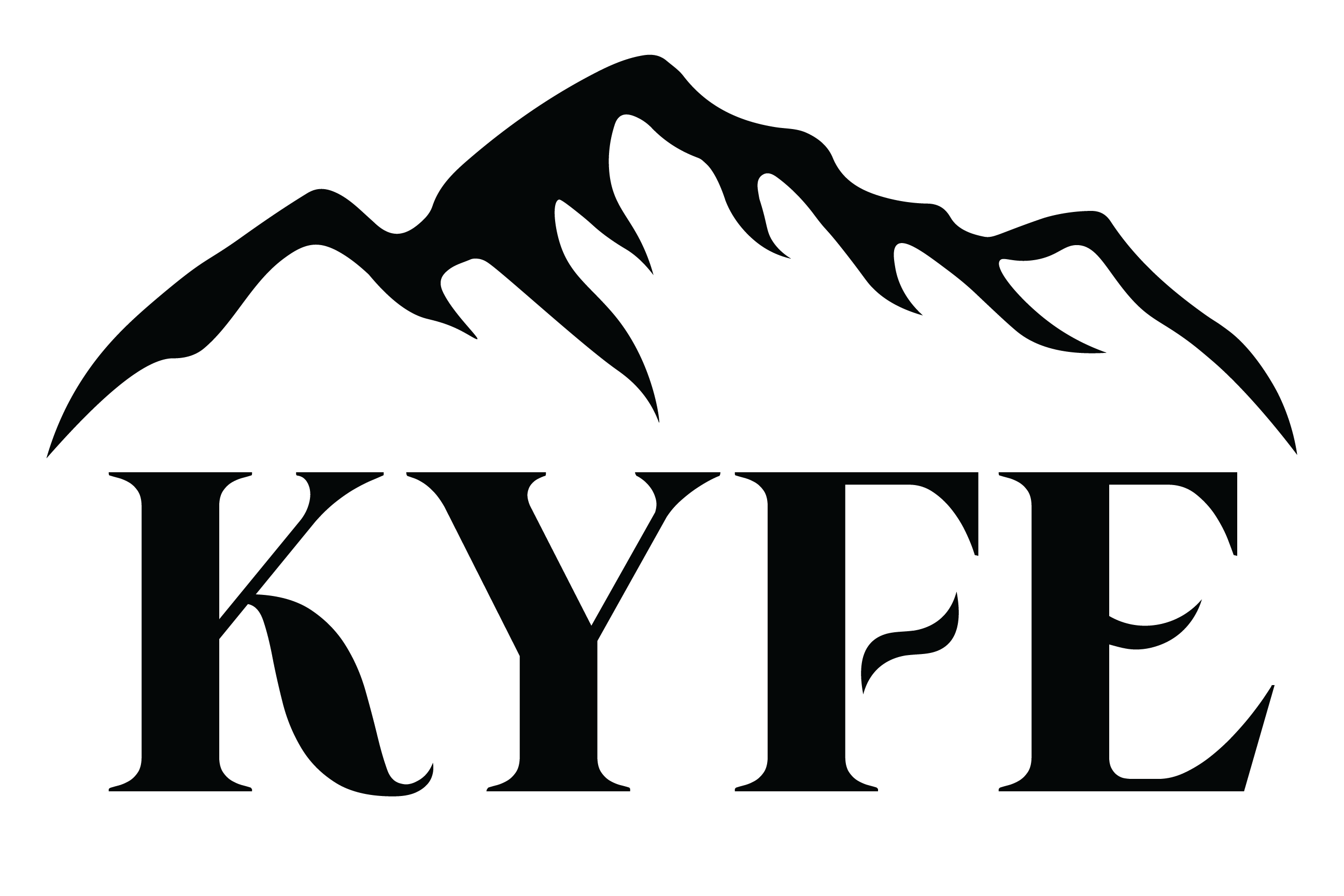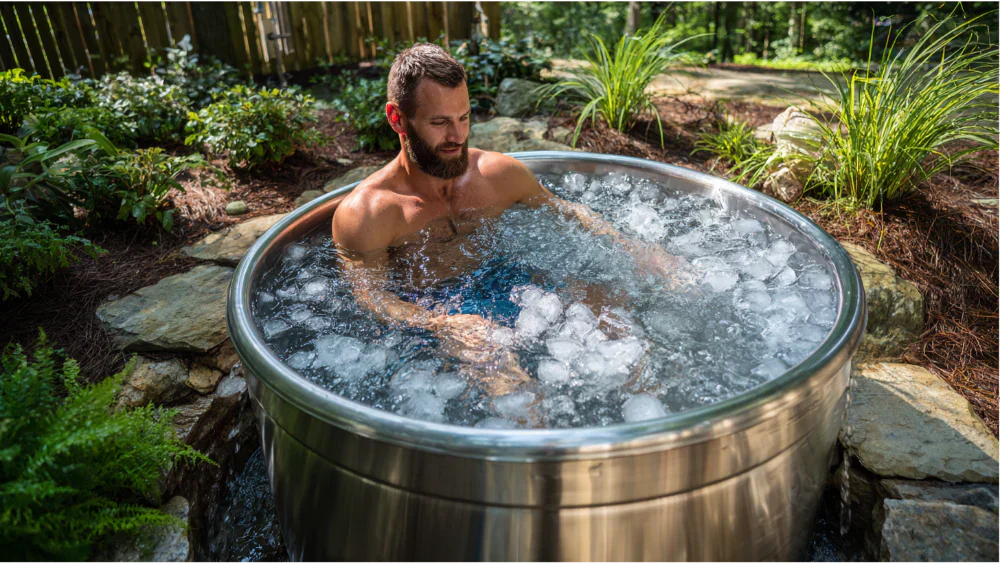Why the Sauna and Cold Plunge Experience Is a Modern-Day Wellness Ritual
In 2025, the sauna cold plunge routine has become more than just a wellness trend. It is now a widely embraced method of building resilience, reducing stress, and enhancing recovery, an intentional practice that balances hot and cold temperatures to train both the body and mind. With roots in Finnish sauna bathing and Nordic cycle traditions, contrast therapy has evolved into one of the most effective ways to reset, recharge, and reconnect.
At the heart of this movement is the Kyfe Sauna, a wood-burning, outdoor, full-body hot sauna designed for real heat, deep steam, and a return to ritual. When paired with icy cold water immersion, this hot and cold therapy activates powerful physiological responses that support cardiovascular health, mental clarity, immune function, and recovery. Whether you're looking to reduce muscle inflammation, improve circulation, or simply reclaim a deeper sense of well being, the sauna and cold plunge combination delivers results you can feel immediately.
Let’s explore how to structure your sauna cold plunge routine for maximum impact, and why this daily ritual is transforming physical and mental health around the world.
The Health Benefits of Contrast Therapy

Circulation and Cardiovascular Conditioning
One of the primary health benefits of the sauna cold plunge routine is improved blood circulation. During a sauna session, the deliberate heat exposure causes blood vessels expand, increasing blood flow and raising your core body temperature. This temporary state, often reaching over 200°F in a hot sauna, mimics cardiovascular exercise. Once you exit the extreme heat and immerse in cold water, the body reacts by constricting blood vessels, rapidly redirecting blood toward vital organs.
This alternating dilation and constriction of blood vessels improves vascular tone and supports long-term cardiovascular health. Studies have shown that repeated contrast therapy can help regulate blood pressure and increase heart rate variability, both strong indicators of reduced risk for heart disease and high blood pressure.
Muscle Recovery and Inflammation Reduction
Heat therapy, especially in a hot sauna, relaxes muscles and supports recovery by increasing oxygenated blood flow to fatigued tissues. When followed by cold water immersion, it reduces muscle inflammation and minimizes soreness. Athletes and high-performing individuals often use contrast therapy to accelerate healing, manage physical stress, and optimize recovery time.
An effective sauna and cold plunge routine helps reduce muscle soreness and improve flexibility, especially when combined with breathing techniques. Whether you’ve finished a strength workout or a long day of meetings, this ritual offers immediate physical relief and deeper muscle relaxation, providing notable pain relief.
Immune System Activation and Hormonal Response
Contrast therapy is also a powerful tool for activating the immune system. The intense heat of sauna sessions increases the production of white blood cells and heat shock proteins, specialized molecules that help repair damaged cells and enhance resilience. Cold water immersion further stimulates the immune response, boosting the release of norepinephrine, which plays a key role in inflammation reduction and immune defense.
Cold shock and cold stress, when applied deliberately in a safe environment, increase alertness, elevate mood, and stimulate brown adipose tissue. Brown fat, or brown adipose tissue, is metabolically active and helps regulate body temperature while burning calories. Activating brown fat through cold temperatures not only supports fat loss but also helps balance metabolic function over time.
Mental Health, Stress Reduction, and Well Being
Contrast therapy deeply affects the nervous system. Sauna use triggers a parasympathetic response, allowing the body to rest and repair. Cold exposure, on the other hand, activates the sympathetic nervous system and the body’s natural fight or flight response, sharpening mental focus and building tolerance to stress.
The alternation of hot and cold trains the nervous system to adapt more efficiently, resulting in better mood regulation, reduced anxiety, and increased mental well being. Many users report enhanced clarity, reduced brain fog, and a grounded sense of euphoria after just a few sessions.
This reset isn’t just physical, it’s emotional, too. Cold plunge routines, especially when paired with breathwork, allow you to override automatic stress responses, regulate your heartbeat, and step back into your day with clarity and confidence.
How to Build Your Ideal Sauna Cold Plunge Routine

Creating the Right Environment
Your environment matters. With Kyfe Sauna, you're equipped to create the ideal setup in your backyard, at a campsite, or beside a lake. This full-size, outdoor sauna reaches true sauna bath temperatures and generates heat through wood fire, not electricity or infrared panels. This means it delivers the authentic löyly experience, where you can pour hot water over hot sauna rocks to create dense, therapeutic steam.
Set up your cold plunge tub nearby. You can use a cold plunge tub, an ice bath barrel, or even a natural body of water for cold immersion. Ensure the distance from sauna to plunge is short enough to preserve the thermal shock effect but safe and easy to navigate.
Timing and Protocols for Every Experience Level
Beginner Contrast Therapy Protocol
-
15 minutes in the sauna
-
1 minute in cold plunge tub (50–60°F, close to normal temperature)
-
Rest and hydrate
-
Repeat 2 rounds
Intermediate Contrast Therapy Protocol
-
20 minutes in hot sauna with löyly
-
2–3 minutes in icy cold water (45–55°F)
-
Focused breathwork between transitions
-
Repeat 3 rounds
Advanced Sauna Cold Plunge Routine
-
20+ minute sauna bath, potentially up to 220°F
-
3–5 minutes in cold plunge or ice bath (32–45°F)
-
Advanced breath retention or meditation
-
Repeat 3-4 rounds
Listen to your body. Watch for signs of overheating or excessive cold stress. For most users, 2 to 4 sauna and cold plunge sessions per week provide optimal benefit without overstressing the body.
Pre- and Post-Workout Strategies
If you're training, your sauna cold plunge routine can support both warm-up and recovery. Sauna bathing before a workout helps increase blood flow and reduce joint stiffness. Cold plunges are best used after endurance or cardio workouts to support inflammation reduction. Avoid using cold therapy immediately after heavy strength training, as cold temperatures may inhibit muscle growth by limiting protein synthesis.
Key Safety Considerations
Contrast therapy is powerful. While it offers exceptional health benefits, it's essential to approach it with mindfulness and care.
-
Stay hydrated: Always drink water and replenish electrolytes before and after each session.
-
Monitor body temperature: Overexposure to extreme temperatures, whether heat or cold, can be dangerous.
-
Consult a healthcare professional: Pregnant women or individuals with high blood pressure, cardiovascular issues, or chronic conditions should seek medical advice before starting contrast therapy.
-
Start slow: Gradually increase sauna session duration and cold immersion times over several weeks.
-
Use gloves and proper equipment: When operating a wood-fired sauna like Kyfe, always follow safety protocols to avoid burns or injury.
Kyfe Sauna: The Ultimate Tool for Starting Contrast Therapy at Home
Kyfe was designed with contrast therapy in mind. Unlike an infrared sauna session, which lacks the intense heat required for heat shock protein activation, the Kyfe wood-burning sauna delivers true heat exposure. With temperatures over 200°F and steam-ready rocks included, it creates the ideal environment for physical recovery and emotional reset.
Whether you’re building an ice bath routine in your backyard or bringing a sauna cold plunge setup to your mountain cabin, Kyfe gives you the freedom to immerse in heat and cold without compromise. The tent is spacious, portable, and made from weather-resistant materials. The wood-burning stove generates heat efficiently and retains it longer than electric or infrared models.
Kyfe also encourages community. The sauna fits 4 to 6 people comfortably, making it a shared ritual for families, couples, or wellness-focused groups. Breathwork, music, silence, intention, however you create your space, Kyfe supports it.
What to Expect After 30 Days of Contrast Therapy

The results are hard to ignore. After a consistent 30-day sauna cold plunge routine, many users report:
-
Improved sleep quality
-
More energy and less brain fog
-
Lower resting heart rate and improved blood pressure
-
Enhanced skin health from improved blood circulation
-
Decreased muscle soreness and faster recovery
-
Reduced anxiety and better emotional regulation
-
A deeper connection to self and nature
Over time, this practice becomes more than a routine, it becomes a lifestyle. A rhythm. A ritual.
Frequently Asked Sauna Cold Plunge Routine Questions
Is the sauna and cold plunge routine safe for everyone?
Not everyone. Consult a healthcare professional if you’re pregnant, managing heart conditions, or taking medications that affect heat or cold tolerance.
Can I use a cold shower instead of a plunge tub?
Yes. While not as intense as full cold immersion, a cold shower still provides many benefits of cold exposure and is a good starting point for beginners.
How cold should the cold plunge be?
Anywhere from 32 to 60°F. Beginners should start on the warmer end and reduce as tolerance increases.
Is a lake or river safe for a cold plunge?
Yes, as long as the water is clean and accessible. Always scout your environment and enter slowly to avoid cold shock.
Does contrast therapy help with mental health?
Absolutely. Cold exposure improves mood-regulating hormones and contrast therapy reduces stress, anxiety, and symptoms of burnout.
How long should I wait between hot and cold?
Minimal delay is best. The shift from hot to cold temperatures is what creates the therapeutic contrast.
Final Thoughts: A Lifestyle Built Around Ritual and Resilience
Hot and cold therapy isn’t new, it’s a timeless ritual rooted in human physiology and ancestral wisdom. What’s different now is accessibility. With tools like the Kyfe Sauna, you can bring the sauna cold plunge experience to your own space and create a practice that supports both physical and mental health.
Whether you're beginning your cold plunge routine or refining your ice bath sessions, Kyfe empowers you to master this contrast therapy with style, safety, and soul.
Explore Kyfe Sauna and begin your journey toward deeper resilience, recovery, and well being.



Sauna for Pregnant Women: What You Need to Know About Heat, Safety, and Wellness
Is Sauna Good for Skin? The Definitive Guide to Skin Health Through Sauna Bathing